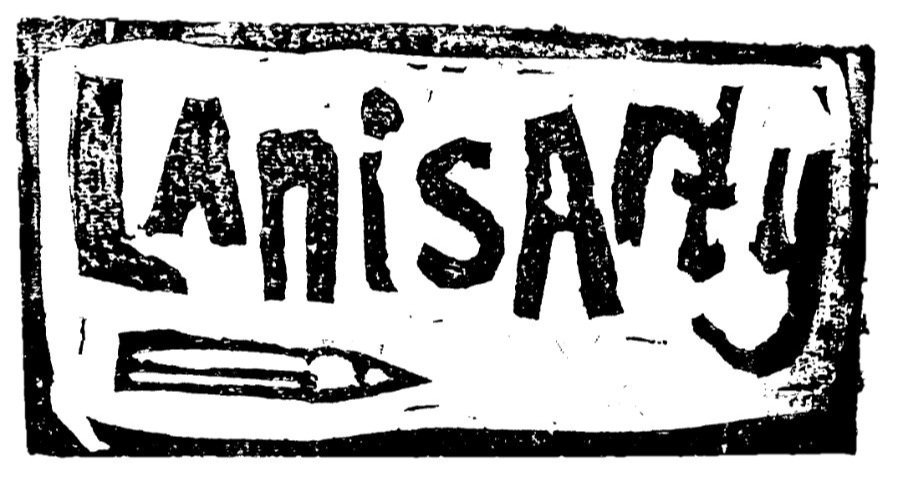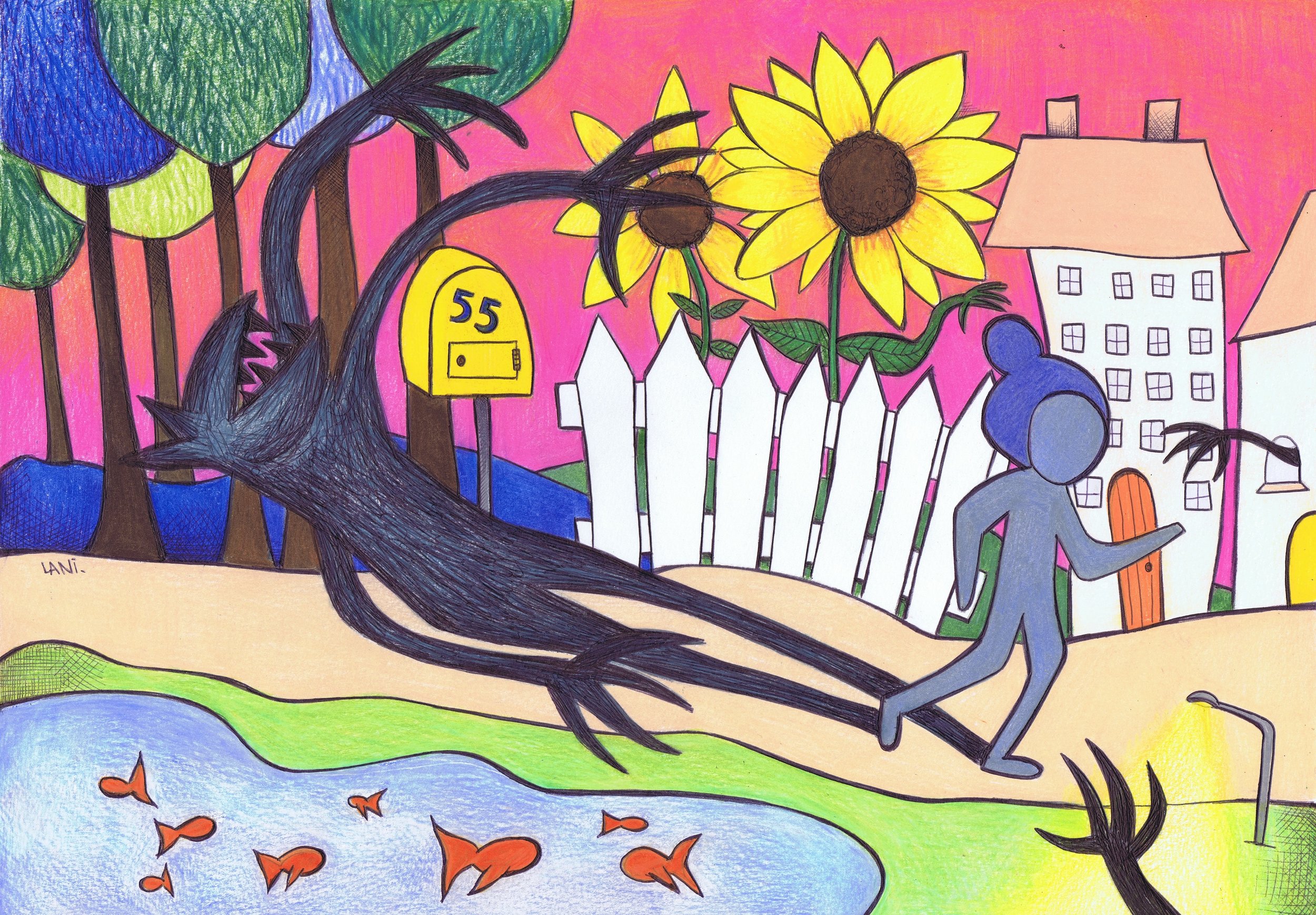Post Traumatic Shadows In Suburbia, 2023. Pencil and pen 29.7x42cm
Hi there!
As part of an ongoing drawing series depicting mental health conditions, the focus of this image is post traumatic stress and post traumatic stress disorder.
As a therapist I have seen and worked with this on a regular basis and thought it would be helpful to shed light on this disorder (as well as curiously representing it as an artist)
What is it?
Post traumatic stress can occur after exposure to any event that threatens life or safety (including war, accidents, assaults, natural disasters…Beyond Blue notes interestingly that car accidents and other serious accidents are the leading cause of PTSD in Australia)
Beyond Blue (2022) notes the following symptoms can occur a traumatic event:
“Very negative beliefs about yourself, others or the world.
Persistently blaming yourself or others for what happened.
Persistently feeling negative, angry, guilty or ashamed.
Feeling less interested in doing things you used to enjoy.
Feeling cut off from others.
Trouble remembering details from the event
Touble feeling positive emotions (such as love or excitement).”
Some of the warning signs that post traumatic stress is lingering is feeling ‘wound up’ or ‘on edge’ (or hypervigilant)- this might come with feeling irritable, not being able to sleep well, and being startled easily. Along with this, ‘flashbacks’ of the event may occur- unwanted reliving of the event as vivid images or nightmares.
In this drawing, the following aspects of PTSD are emphasised:
the lingering feeling of unsafely and danger…(shadows) in contrast with the bright (almost too cheerful) backdrop of normal suburbia
The person is blank..numbed? It could be anyone…it could be someone you know..
It looks like no matter where the person turns there is a threat waiting for them…Finding the feeling of safety and stability again is a challenge…
Treatment
BeyondBlue notes there are several ways to treat PTSD…including CBT and medication.
Art therapy, I would argue, is also a great modality to address trauma.
Art therapy addresses the “whole experience of trauma: mind, body, and emotion.”
“By working through PTSD with art, what was a terrifying experience that caused lots of symptoms can become a neutralized story from the past.” (Healthline, 2017)
In my own practise, we often start with the physiological trauma response: What is the body doing? And how can we soothe the fight/flight/freeze response? We work on feeling safe. We work on the present. Through being in a safe environment, and building a trusting connection with a therapist, artwork created in therapy can represent and explore some of the challenges that come with post traumatic stress.
What does the feeling of ‘on alert’ look like? Sometimes clay figurines are created to show this state of being. Sometimes finger painting all over a huge piece of paper accurately expresses the darkness being experienced. Sometimes just sitting and repeating a soothing sensory experience is part of recovery. Sometimes we explore distraction strategies by looking at artworks and drawing a favourite safe place. Sometimes writing letters or poetry gives the person their voice to find themselves amongst all their symptoms. Sometimes a person is not ready yet to explore and face their PTSD symptoms so we look at quality of life experiences to bring enjoyment into their present and reduce their distress.
Myths
It is just army veterans who have PTSD….It can be experienced by anyone after a huge variety of traumatic experiences
Its chronic and can’t be treated…. There are lots of ways to manage and work through PTSD and it does not have to be lifelong
If the trauma happened ages ago you should be ‘over it’ by now….Traumatic experiences affect everyone differently (there are a number of reasons for this) and time does not automatically heal all wounds
PTSD happens right after the traumatic exposure….Sometimes this may be the case, but symptoms can emerge after many years or come and go over long periods of time
Hope & Post Traumatic Growth
Several decades ago the term ‘post traumatic growth’ was coined to capture a phenomenon that can occur following exposure to trauma. There are 5 domains of growth that have since been identified:
Appreciation of life
Relationship with others
New possibilities in life
Personal strength
Spiritual change
This phenomenon allows for the understanding that some people (WHEN THEY ARE READY) are able to experience growth in the shadow of a trauma- not a false sense of positivity but a lense to see through which helps make sense of their experience and identify strengths in the aftermath.
This understanding can assist with a person “reconstructing their perceptions of self, others, and the meaning of events while they are coping with the aftermath of trauma” (Psychology Today, 2017).
If you or someone you love is experiencing posts traumatic stress, know that it does not have to be a permanent place to live and the shadows can become smaller.
Please reach out or click on any of the links to find out more about support available.
Further Reading and Links
https://www.tac.vic.gov.au/__data/assets/pdf_file/0016/270232/Art-Therapy-2018-Full-Report.pdf
https://www.healthdirect.gov.au/post-traumatic-stress-disorder-ptsd
https://www.everydayhealth.com/ptsd/common-ptsd-myths-debunked/
https://www.beyondblue.org.au/mental-health/anxiety/types-of-anxiety/ptsd
https://www.healthline.com/health/art-therapy-for-ptsd#PTSD,-the-body,-and-art-therapy
https://www.psychologytoday.com/au/basics/post-traumatic-growth

